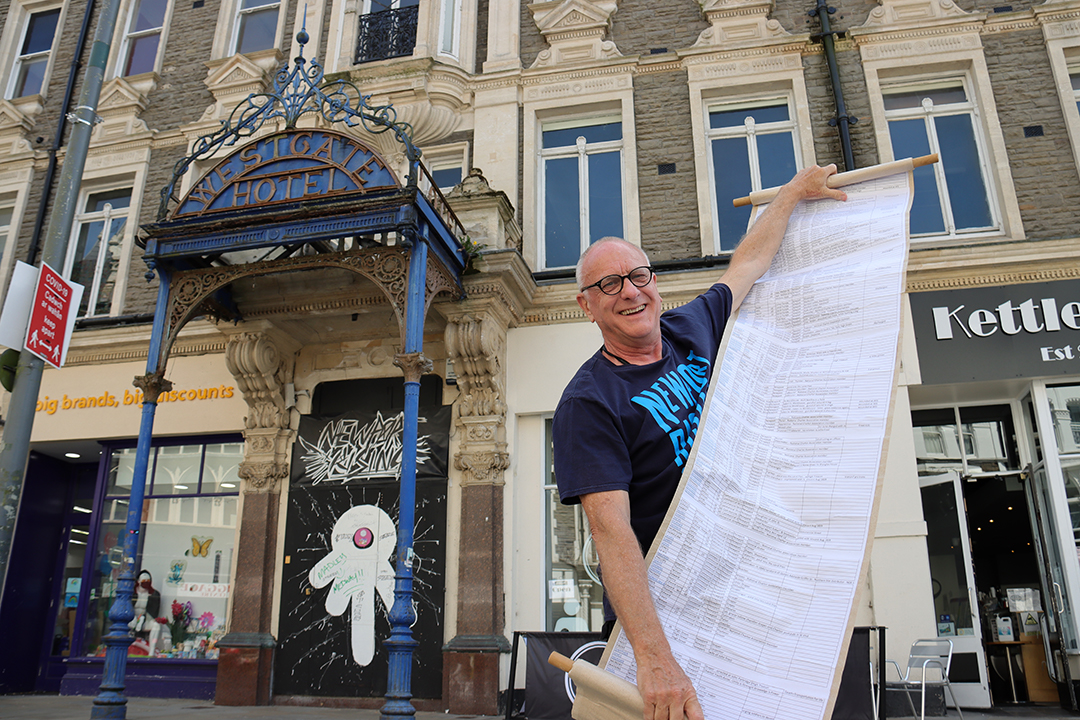Leading city historian unveils list of 200 Newport addresses where c19th insurrection leaders lived
LEADING Chartist historian Pat Drewett has revealed important information which sheds new light on activities of those involved in the infamous nineteenth century insurrection.
After months of detailed and painstaking research the historian and former teacher, from Newport, today unveils a list of some 200 names and their contemporary addresses dotted around the town.
Addresses in Llanarth Street, Friars Street, Stow Hill, Commercial Street and Allt-yr-Yn, are joined by scores more in Pat’s fascinating fact file.
The archivist has constructed a detailed chart which, he says, locates the precise home addresses and other personal details of more than 200 Chartists living in Newport in 1839.
Poring over museum and other historical records as well as newspaper and court reports of news and trials, Pat has itemised names and addresses of Chartists living throughout the town.
The historian, who says he is grateful for assistance from other local historians in his work, now plans to complete similar Chartist forensic work on more south Wales valleys towns.
Pat says he has created the chart of names and addresses as a homage to the original chart signed by the Chartists. The list is available for those interested as a computer spreadsheet.
Not only does Pat believe his findings will rekindle local interest in Chartists, in particular from those people living today in the houses he identifies but he also believes the information could add weight to the city’s crucial bid to secure UK City of Culture 2025.
Pat, who has been heavily involved in the Chartist movement in Newport for many years, said: “I believe people will be absolutely fascinated in finding out that someone intimately involved in the Chartist uprising lived in their house or that they are a neighbour of where a Chartist once lived.
“This new information is important also as it helps to give the Chartists and what they were about, new life. The history and heritage of Chartism is unique to Newport.
“What’s more I believe that this data can add huge strength and weight to Newport’s bid for City of Culture.
“It’s important to celebrate because the Chartists were struggling for freedom, for justice and for the right to vote-everything which is as important today as it was back in the 1840’s.
“What this does is help to keep interest in Chartism and our history alive. It shines a light on the desperate struggles of the past and also serves to bring them right up to date in a meaningful and tangible way.”
To view Pat Drewett’s chart visit https://1drv.ms/x/s!Aqe1sAOpy4nJkXfGgWGZ8wKZBFjW?e=hRWouD
Names selected at random from Pat Drewett’s list:
- James Stephens, 33, Malpas Village, Newport, National Charter Association Member
- John James, 43, Mellon Street, Newport, Carpenter
- William ‘Billy’ Davies, 16, Llanarth Street, Newport, Shoemaker, Parents lived in Tan Yard High Sreet
- William Watkins, 33, Stow Hill, Newport, Woodcutter, charged with inducing a soldier to desert and fined £20
- Samuel McFarlane, 26, Charles Street, Newport, Painter/Artist & National Charter Association member
- William Morgan Snr, 55, Allt-yr-Yn, Newport, Farmer and supplied beer to Pontypool Chartists
- Ebenezer Williams, 33, Cardiff Road, Newport, Plasterer and Landlord of the Prince of Wales, Charged with conspiracy but no prosecution
- Elizabeth Powell, 25, Queen’s Street, Newport, Shoemaker
- Mary Hagarty, 19 or 29, Workhouse Stow Hill, Newport, worked in the Workhouse, built a bonfire in a field
- Daniel Tombs, 48, Canal Parade, Newport, Anchor Maker and Blacksmith
Chartist Factfile: Newport, Home of the Vote.
By 1839, thousands of ordinary working families in South Wales had become Chartists by signing The People’s Charter to petition Parliament for six changes to election law, including the right to vote.
The million-signature Charter was taken in procession and presented to Parliament where it was promptly ignored.
The Newport Rising march, with the aim of demanding the release of Chartist prisoners being held at the Westgate Inn, Newport, took place on November 4, 1839.
When thousands of Chartists arrived at the Westgate at 9am, a trap had already been set, with soldiers lying in wait behind the closed shutters of the Inn.
More than 22 Chartists were shot dead that day, and many more were arrested and sent for trial at Shirehall Monmouth.
Chartist leaders John Frost, Zephaniah Williams and William Jones were sentenced to be hanged, drawn and quartered.
After widespread public protest, the sentence was changed to transportation for life to a prison colony in Port Arthur, Victoria, Australia.
in 1856 John Frost was granted full pardon and returned home to Newport and a hero’s welcome 16 years later,
